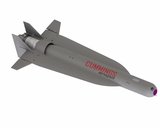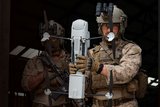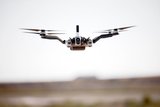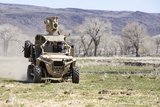New robotic repair system will fix ailing satellites
Researchers at Queen’s University are developing a new robotic system to service more than 8,000 satellites now orbiting the Earth, beyond the flight range of ground-based repair operations. Currently, when the high-flying celestial objects malfunction – or simply run out of fuel – they become “space junk” cluttering the cosmos.
“These are mechanical systems, which means that eventually they will fail,” notes Electrical and Computer Engineering professor Michael Greenspan, who leads the Queen’s project. But because they are many thousands of kilometres away, the satellites are beyond the reach of an expensive, manned spaced flight, while Earth-based telerobotic repair isn’t possible in real time.
Dr. Greenspan’s solution to this problem is the development of tracking software that will enable an Autonomous Space Servicing Vehicle (ASSV) to grasp the ailing satellite from its orbit and draw it into the repair vehicle’s bay. Once there, remote control from the ground station can be used for the repair, he explains. “The repair itself doesn’t have to be done in real time, since everything is in a fixed position and a human can interact with it telerobotically to do whatever is required.”
The Queen’s team is now working to develop the ASSV with the aerospace company MDA (McDonald-Detweiller Associates) Space Missions, which earlier built the Canadarm and has been responsible for all Canadian systems in the International Space Station.
Computer vision is the main technical challenge of grasping the satellites, Dr. Greenspan continues. Since these objects circle the globe in “geosynchronous” orbit, their speed is synchronized with the Earth’s rotation. The robotic system must recognize the satellite first, then determine its motion and match that motion before grabbing it.
Due to the harsh illumination conditions in space, conventional video cameras are of limited use. The preferred sensor is a form of light-based radar called LIDAR, which provides a set of 3D points that accurately measure the surface geometry of the satellite.
The Queen’s team, which includes Electrical and Computer Engineering graduate students Limin Shang, Babak Taati and Michael Belshaw, has developed software that allows such a system to identify a satellite, determine its position and finally track it in real time, using this specialized range data. They have recently received funding from the Natural Sciences and Engineering Research Council (NSERC) to continue looking at fundamental aspects of this new technology.
Another potential, terrestrial application of their findings is in the area of “flexible” manufacturing, says Dr. Greenspan. Using vision systems and algorithms, objects can be recognized and tracked as they go down a conveyor belt or assembly line. ”Once you can do that, automated manufacturing systems can interface much more flexibly with the objects,” he notes. “The result will be a much easier and more cost effective manufacturing process.”
PLEASE NOTE: A video from Dr. Greenspan’s lab, showing a target object in a real-time tracking sequence, may be viewed online.
More from Uncrewed Vehicles
-
![Cummings Aerospace showcases Hellhound loitering munition designed for US Army’s LASSO programme (video)]()
Cummings Aerospace showcases Hellhound loitering munition designed for US Army’s LASSO programme (video)
Cummings Aerospace presented its turbojet-powered Hellhound loitering munition at SOF Week 2025, offering a man-portable solution aligned with the US Army’s LASSO requirements.
-
![SOF Week 2025: PDW unveils attritable FPV drone for SOF operations at scale]()
SOF Week 2025: PDW unveils attritable FPV drone for SOF operations at scale
PDW has revealed its Attritable Multirotor First Person View drone at SOF Week 2025, offering special operations forces a low-cost, rapidly deployable platform for strike and ISR missions, inspired by battlefield lessons from Ukraine.
-
![SOF Week 2025: Teledyne FLIR white paper provides guidance on reusable loitering munitions]()
SOF Week 2025: Teledyne FLIR white paper provides guidance on reusable loitering munitions
Teledyne FLIR is highlighting the emerging requirements for 'recoverable and re-usable' loitering munitions across the contemporary operating environment during this week’s SOF Week conference in Tampa, Florida.
-
![SOF Week 2025: Kraken Technology group debuts K3 Scout USV in North America]()
SOF Week 2025: Kraken Technology group debuts K3 Scout USV in North America
High-performance maritime industry player Kraken Technology Group, based in the UK, has used the SOF Week conference in Tampa, Florida this week to debut its K3 Scout uncrewed surface vessel (USV) to the North American market.
-
![Palladyne AI and Red Cat to demonstrate capabilities for autonomous drone swarms to the US military]()
Palladyne AI and Red Cat to demonstrate capabilities for autonomous drone swarms to the US military
Red Cat and Palladyne AI recently conducted a cross-platform collaborative flight involving three diverse heterogeneous drones.
-
Jammer resistant drone designs spark search for countermeasures
The Russia-Ukraine conflict has driven another stage of evolution for drones and the counter measures to defend against them.

























